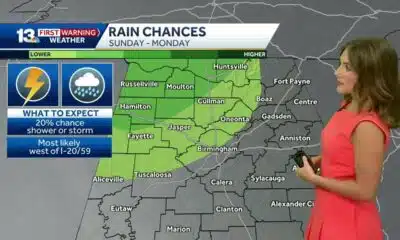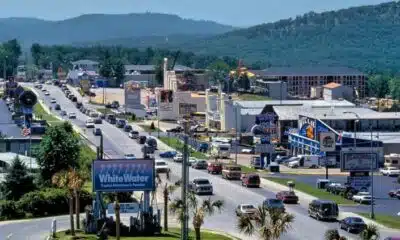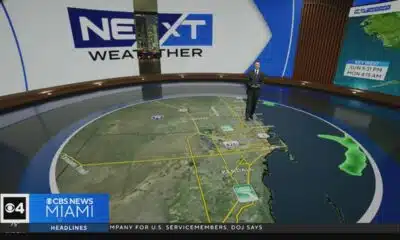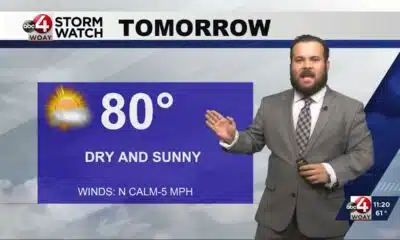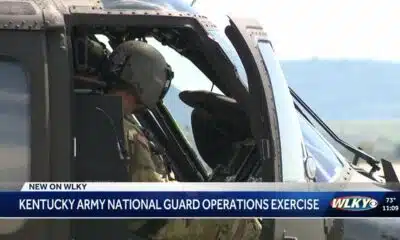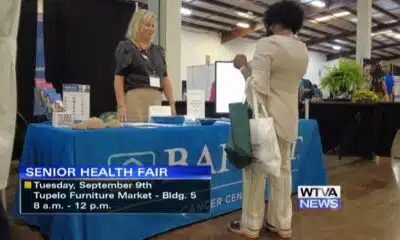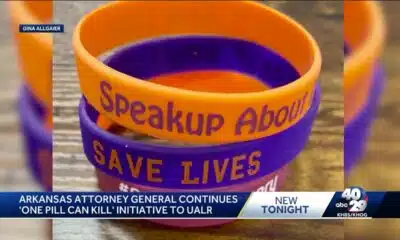News from the South - North Carolina News Feed
Death of 2 young riders shows Asheville area’s cycling paradise is sometimes lethal • Asheville Watchdog
When Andrew Crater was a young professional cyclist, riding and racing all over the world, he settled in Asheville to train. It’s no surprise, he said, that Jake Hill and Lennie Antonelli did the same.
“There might be equally beautiful places, but they’re not going to be any better than what we have here,” said Crater, 47, the director of Hill’s Greenville, South Carolina-based SupraBars team.
“The draw to the Blue Ridge Mountains is just how majestic they are, especially when you get out there on these beautiful roads where there are no cars,” he said.
One of Hill’s favorite routes, from the Folk Art Center to the top of 6,684-foot Mt. Mitchell, Crater said, is “one of the most stunning rides in the world.”
But it was in this cycling paradise that Hill, 32, and Antonelli, 27, died on their bikes.
On NC 251 just north of the Buncombe-Madison County line, an oncoming dump truck veered across the center line on July 1 and plowed into their regular Tuesday-evening group ride.
The tragedy highlights the central irony of riding in and around Asheville, said Mike Sule, director of the Asheville on Bikes advocacy group:
It’s one of the East’s premier destinations for road and mountain biking. It can also be a frightening and, too often, lethal place to ride.
Asheville was ranked by the state as the most dangerous city in North Carolina for pedestrians in 2020. And though the city is not as notoriously hazardous for cyclists, the root cause of both walking and cycling accidents is the same, Sule said:
The shortage of options to get around by any means other than a motorized vehicle.
And while city leaders say they have bucked challenges including community opposition and daunting topography to launch several programs to build such “multimodal” facilities, it’s not enough, Sule said.
The area’s network of sidewalks, bike lanes and greenways remains spotty and fragmented, forcing pedestrians and riders to travel along the edge of ever-busier, mostly shoulder-free streets and highways.
It’s one reason the city and Buncombe County have continued to see a high rate of cycling and pedestrian crashes, documented by both Sule and the state Department of Transportation – one reason, the city’s website says, that “Asheville consistently ranks as one of the top cities in North Carolina for bicycle and pedestrian fatalities.”
It’s also why Asheville’s cycling network has been given a score of nine out of a possible 100 by the PeopleforBikes advocacy group.
That’s the second-lowest rating on the organization’s list of 15 medium-sized cities in the state. It puts Asheville far below peers such as Cary (34) and Chapel Hill (37) and even further below other nationally known hubs of outdoor recreation, including Bentonville, Arkansas (46), and Boulder, Colorado (70).
“We are way behind other comparable outdoor cities,” Sule said, “and that’s a direct threat to our future prosperity and safety.”
‘People you know’
It’s not just about bike lanes, said Austin Walker, who suffered broken bones and a torn knee ligament in March when a driver pulled through an intersection in front of his bike.

It’s also about the negligence of such drivers, which Walker, 50, said stems from a tendency for them to see riders merely as Lycra-clad annoyances; it’s about “a culture that allows motorists. . . to feel superior to cyclists and to not view them as human beings, almost.”
Antonelli and Hill were, of course, dedicated and accomplished riders, licensed as top-category, “Cat. 1,” racers, said Sam White, co-owner of Liberty Bicycles, where Antonelli worked for nearly four years.
But they were also admirable young men, responsible both on and off their bikes, building relationships and community-minded careers.
Hill started racing as a teenager in his hometown of St. Petersburg, Florida, attended Mars Hill University on a cycling scholarship and graduated with a degree in finance, said his father, Peter Hill.
For several years afterward, he lived like a “poor college kid” in apartments mostly bare except for stacks of books on subjects ranging from the lives of Wall Street titans to the existential philosophy of Albert Camus, his father said.
Jake Hill started working in motels to finance his cycling, his father said, but in recent years developed a long-term plan to open his own hotel, taking on and excelling in bigger hospitality jobs, including his last position as general manager of the Fairfield Inn & Suites in Weaverville.
He remained in this post for three weeks after the arrival of Tropical Storm Helene, turning the high-and-dry Inn into a hub of recovery, a source of food, water, shelter and cell service to relief workers and the community.
“He just basically opened the doors,” Peter Hill said. “He was, like, we’ll figure it out later.”
It earned him “some huge award from the company,” his father said. “He was a star in that organization.”
Peter Hill witnessed this growth for himself on visits from his home in Florida to Asheville, working remotely at the Inn’s “business center” near the lobby.
When he overheard his formerly reserved son’s confident dealings with guests and staff, “I had to poke my head out,” he said. “I’m like, ‘Is this my son talking?’”
Antonelli, who became engaged shortly before his death, briefly worked as an accountant after graduating from Indiana University and before he moved to Asheville to take a job at Liberty and race and train, White said.
Photos posted on the shop’s Facebook page since the accident show a racer-lean young man with bushy dark hair and, invariably, a wide, warm smile.
“He was just a genuine, caring person, one of the most mature people I’ve ever met in their mid-20s,” White said.

He stood out for his customer service and “flourished mightily” after White and his partners bought the store in February and entrusted Antonelli with administrative jobs that showcased his accounting skills and his bright future in the industry.
“He just had a lot of gifts that, unfortunately, the world’s not going to take advantage of now,” White said.
His and Hill’s deaths “have galvanized our community in a way I’ve never seen before,” said White, who has been riding in the city since the mid-1980s.
The unified message he’d like to send is that riders “are not just some foreign objects on the road,” he said, but “members of the community — brothers, sisters, mothers, fathers, people you know.”
Improving the ‘Road Diet’
Sule, on the other hand, sees the young men’s deaths as a call to improve cycling infrastructure.
Though their crash wasn’t in the city, that makes it an outlier. Asheville, the gateway to the surrounding countryside, is the site of the large majority of the area’s serious cycling and pedestrian accidents. And unlike the counties in North Carolina, cities own and maintain roads.
Asheville has used its authority over infrastructure to greatly expand its network of walkways and bikeways, said Mayor Esther Manheimer, who has consistently backed such projects.
“We’ve done it, we’re doing it and it’s costing us millions of dollars,” she said.

In 2022, for example, the City Council passed the Close the GAP Planning Process to streamline the work of identifying and completing sidewalks, ADA-compliant ramps, and dedicated greenways.
A page on its website shows that six of these greenways are in the works and six more have been completed, including a 1.2-mile stretch of the French Broad River West Greenway from New Belgium Brewing Co. to a city park, which opened in 2022.
With the greenway’s $3.2-million cost paid for by a grant from the French Broad River Metropolitan Planning Organization and matching funds from the city, it’s an example of the city’s efforts to corral resources for multimodal transportation.
The city will also spend about $900,000 to build, starting next year, “buffered bike lanes, high-visibility crosswalks and dedicated space for delivery vehicles” on downtown stretches of College Street and Patton Avenue, according to a city webpage on the project.
It’s not easy to do this work in Asheville, Manheimer said.
Its streets are narrower and the constraining hillsides steeper than those of the Midwestern cities held out as models of effective multimodal transportation, she said.
For example, one state/city project, the planned 1.3-mile extension of the Wilma Dykeman Greenway, could provide cyclists with a safe alternative to the stretch of NC 251 from the northern end of the River Arts District toward Woodfin.
But the obstacles of adding a shoulder to the highway farther north are daunting, according to DOT Division 13 Project Development Engineer Steve Cannon, who cited “physical challenges of limited width between the river and many rock outcroppings.”
Then there’s the opposition to bike infrastructure from business people such as Bob Byron, owner of Rye Knot restaurant, brewery and distillery on Merrimon Avenue in North Asheville.
Though “business has never been better,” he said, it would be better still if the NCDOT had not implemented its controversial “road diet” reconfiguration two years ago, eliminating one lane of traffic in each direction on a 2.3-mile stretch of the state-maintained avenue in cooperation with the city, adding a central turn lane and marking off bike lanes on each edge.
Because of increased congestion, “I think most locals avoid it if they can,” Byron said. “I think it hurts all the businesses here.”
Also, as shown by Asheville Watchdog staffers’ fruitless search to find riders to interview and photograph during a lunch hour last week, the lanes are lightly used, especially midday.
“I don’t think cyclists take advantage of it because there’s too much traffic,” Byron said.
Bikes on sidewalks
But far more riders (700) used the road during a one-month period in 2023 after the project’s completion compared to the tally (400) during a month before the lanes opened, according to the results of a NCDOT analysis on the city’s website.
The reconfiguration has only slightly increased travel time for cars, the analysis shows, while reducing their speed and, most importantly, the number and severity of crashes on the avenue, said Jessica Morriss, assistant director of the city’s Transportation Department.
“I don’t want to sound like a broken record, but it’s all about safety,” she said.

She also said that bike traffic on Merrimon will increase when the city completes other bikeways that connect to it.
Which gets at a major problem with riding in Asheville, Sule said:
Too many of its bike lanes and greenways don’t lead to destinations that would both make riding a viable option for people who can’t afford cars and build the volume of cyclists needed to fully realize the bikeways’ benefits.
Many of the Council’s actions, such as passing Close the Gap and adopting a Comprehensive Plan with high-minded language about multimodal linkage, are merely “aspirational,” he said, and too often the city has “punted” when faced with hard decisions that would build connectivity.
A prime example is a two-block stretch of Biltmore Avenue in downtown, where the plan was to add bike lanes when the state repaved the road. These lanes would have connected with those planned for Patton.
City Manager Debra Campbell announced in 2022, according to the city’s website, that the work would be delayed “in direct response to business concerns.”
Without the lanes, father and son Aaron and Bradley Woodruff resorted last week to weaving their way on BMX bikes through milling shoppers on a Biltmore sidewalk.
Aaron Woodruff, 52, returning with his son from a nearby skatepark, realizes riding bikes on sidewalks is far from ideal, nodding toward storefronts and saying, “people pop out all the time.”
If he could ride in a bike lane, he said, “I’d be on the side of the road.”
Riding in a ‘nine’
Similar scenes of improvised bike travel are front and center in a cycling video created by Berm Peak, a YouTube channel and mountain biking brand.
The narrator’s mission, he says at the start, is to determine whether Asheville really deserves its “nine” from PeopleforBikes.
“If that was a restaurant review, that would be barely half a star,” he says.
During a day of seeking out destinations such as the city’s top-rated taco shop, he is filmed lugging his bike up long sets of concrete stairs and descending others in rattling, daredevil fashion. He rode on roadsides while being buzzed by heavy traffic and over bridges on narrow pedestrian walkways.
“I don’t know if I would give it a nine,” he concluded. “But then again, I didn’t really have a reason to give it anything higher.”
Though the video focuses on the hassles of riding in Asheville, the more pressing issue is the danger, Sule said.
No document on this subject is as clear as the 2020 report on the hazards to pedestrians, he said. But Asheville roads are dangerous for all users, according to the state Division of Motor Vehicles’ most recent Traffic Crash Facts study, from 2023, which ranks Asheville as the fourth worst city in the state with populations of more than 10,000 for “crash severity and crash rates based on population.”
An interactive DOT webpage, meanwhile, shows that crashes involving pedestrians have trended down only slightly since 2018, which according to the Asheville Citizen-Times, was the last year included in the 2020 study, while the number of reported cycling crashes has trended slightly upward, cresting at 24 in 2023.
And beyond the numbers, Sule can name names, such as Alex Rozos, 26, who was killed by a hit-and-run driver on Swannanoa Road in July 2024 and Kenneth Dewayne Sherline, 40, who died after being hit by a motorist on Brevard Road in December 2023.
They and the nine riders injured in accidents since the spring of 2024 that Sule has documented were almost all locals, he said, which should counter what he called a major source of the opposition to cycling improvements — a belief among longtime residents that bike lanes and greenways are for tourists.
Not that the economic contribution of visiting cyclists should be discounted, he said.
The route of the annual Asheville Grand Fondo cycling event, scheduled for July 20, he said, passes the site on NC 251 where Hill and Antonelli were killed.
“That pulls in 700 to 1000 people every year who are coming to spend the weekend to cycle in Asheville,” he said.
“When word gets out that Asheville is an unsafe place to ride,” he said, “people can elect to go to other places to have safer riding experiences.”
The bike-friendly vision
It’s a mistake to think of the convenience of bike travel separately from safety, said John Rogers, 65, a lawyer for a legal nonprofit who commuted by bike for 30 years in Washington, D.C. (PeopleforBikes score, 52).
It is convenience that creates safety, he said while standing in a sun-drenched Marshall parking lot July 5 with about 200 other cyclists preparing for a memorial ride for Hill and Antonelli.

The more effectively that bikeways link residential neighborhoods to offices, schools and grocery stores, the more people who will use them.
There will come a time, Rogers said, when the stream of cyclists becomes a force that motorists cannot ignore.
Voters and leaders, likewise, will be unable to discount the public benefits — democratization of transportation, improved public health, savings realized by reducing vehicular traffic to the point that it cuts the need to build and widen roads.
Rogers is confident it will happen after watching riders come together at the Marshall ride and other events honoring Hill and Antonelli.
“What I saw was a strong cycling community that had been hit hard but was uncompromising in its love for Jake and Lennie and committed to cycling,” he said.
“We are just not going to stop trying to make cycling safer and more convenient and better for everybody.”
Asheville Watchdog welcomes thoughtful reader comments on this story, which has been republished on our Facebook page. Please submit your comments there.
Asheville Watchdog is a nonprofit news team producing stories that matter to Asheville and Buncombe County. Dan DeWitt is The Watchdog’s deputy managing editor/senior reporter. Email: ddewitt@avlwatchdog.org. The Watchdog’s local reporting is made possible by donations from the community. To show your support for this vital public service go to avlwatchdog.org/support-our-publication/.
Related
The post Death of 2 young riders shows Asheville area’s cycling paradise is sometimes lethal • Asheville Watchdog appeared first on avlwatchdog.org
Note: The following A.I. based commentary is not part of the original article, reproduced above, but is offered in the hopes that it will promote greater media literacy and critical thinking, by making any potential bias more visible to the reader –Staff Editor.
Political Bias Rating: Center-Left
This article emphasizes the need for improved pedestrian and cyclist infrastructure in Asheville, citing tragic accidents and community responses to advocate for safer, more accessible streets. While the reporting is data-driven and features multiple perspectives—including business owners skeptical of current policies—it ultimately frames the issue through the lens of public safety, environmental benefits, and equitable transportation access. These priorities align with center-left policy concerns. The tone is empathetic and community-focused, showing implicit support for expanded infrastructure spending and governmental planning, but without overt partisanship or ideological rhetoric.
News from the South - North Carolina News Feed
NC Courage wins 2-1 against Angel City FC
SUMMARY: The North Carolina Courage defeated Angel City FC 2-1 in Cary, ending their unbeaten streak. Monaca scored early at the 6th minute, followed by Bull City native Brianna Pinto’s goal at the 18th minute, securing a 2-0 halftime lead. Angel City intensified in the second half, scoring in the 88th minute, but the Courage held firm defensively to claim victory. Pinto expressed pride in the win, emphasizing the team’s unity and playoff ambitions. Nearly 8,000 fans attended. Coverage continues tonight at 11, alongside college football updates, including the Tar Heels vs. Richmond game live from Chapel Hill.
Saturday’s win was crucial for the Courage as the regular season starts to wind down.
https://abc11.com/post/north-carolina-courage-wins-2-1-angel-city-fc/17810234/
Download: https://abc11.com/apps/
Like us on Facebook: https://www.facebook.com/ABC11/
Instagram: https://www.instagram.com/abc11_wtvd/
Threads: https://www.threads.net/@abc11_wtvd
TIKTOK: https://www.tiktok.com/@abc11_eyewitnessnews
News from the South - North Carolina News Feed
Is nail gel actually harmful? It's complicated
SUMMARY: Gel nail polishes were recently banned in the EU due to the chemical TPO, which helps the gel harden under UV light. Concerns stem from studies showing potential reproductive risks in rats fed TPO, but humans aren’t exposed this way. The margin of exposure calculated for TPO is very high (1,515), suggesting it’s safe for people. More significant risks come from UV light used to cure nails, which may contribute to skin cancer over time. To stay safe, consider applying sunscreen before your salon visit and discuss toxin-free polish options with your aesthetician. Ultimately, balanced caution is key.
Certain gel nail polishes are no longer widespread in Europe as a chemical was banned due to potential health risks with long-term exposure. But a closer look at the study prompts some questions.
News from the South - North Carolina News Feed
What we know about Charlie Kirk shooting suspect, how he was caught
SUMMARY: Tyler Robinson, 22, from Utah, is in custody as the suspect in the shooting death of conservative activist Charlie Kirk at Utah Valley University. Robinson’s father identified him and convinced him to surrender after family members reported his possible involvement and negative comments about Kirk. Authorities believe Robinson acted alone. Investigators linked Robinson to the crime through Facebook posts and messages retrieved with help from his roommate. Robinson was arrested after fleeing the scene post-shooting. A rifle was found nearby. Charges are expected within three days. Officials praised coordination among police and government agencies in the swift arrest.
Authorities have taken into custody the person they suspect of shooting and killing conservative activist Charlie Kirk on …
-
News from the South - Kentucky News Feed7 days ago
3 states push to put the Ten Commandments back in school – banking on new guidance at the Supreme Court
-
Local News7 days ago
Duke University pilot project examining pros and cons of using artificial intelligence in college
-
News from the South - Virginia News Feed6 days ago
On the record: Winsome Earle-Sears
-
News from the South - Missouri News Feed6 days ago
1587 Prime gives first look at food, cocktail menu ahead of grand opening in KC
-
News from the South - West Virginia News Feed6 days ago
Protesters in D.C. flood the streets demanding an end to Trump’s military deployment
-
Mississippi News Video6 days ago
Interview: Come see Baptist at WTVA Senior Health Fair
-
News from the South - Arkansas News Feed6 days ago
‘One Pill Can Kill’ program aims to reduce opioid drug overdose
-
News from the South - Texas News Feed5 days ago
‘Resilience and hope’ in Galveston: 125 years after greatest storm in US history | Texas


